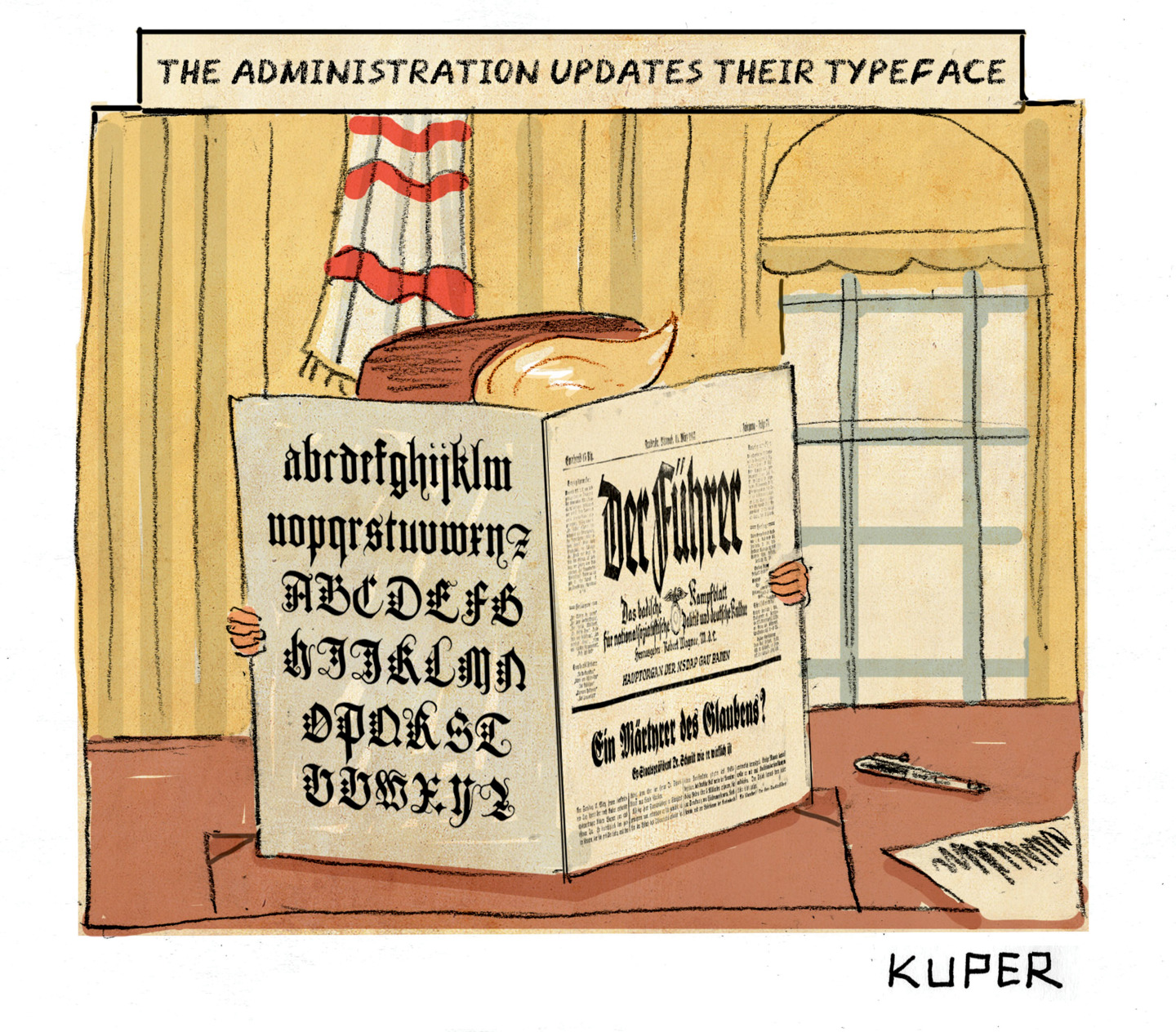The annual American nightmare
By the time the sun sets on April 15, the average taxpayer will have spent 28 hours wading through forms and records in the struggle to give the government its due. How did income taxes get so complicated? How complex is the tax code?
It is a 17,000-page marvel of dense wording and purposeful obscurity. To fully grasp all the rules, loopholes, and shelters, you must wade through another 47,000 pages of Internal Revenue Service regulations, court cases, and other “clarifications” compiled over the years. Sixty years ago, when the stack of documents was a fraction as high, Albert Einstein groused that “the hardest thing in the world to understand is the federal income tax.”
Was it always this way?
No. From the nation’s founding until the early 20th century, the federal government was funded through tariffs and excise taxes. There was no income tax at all, except a temporary version imposed to finance the Civil War. The first peacetime income tax was imposed in 1913, during the Progressive Era, as a means to force the very wealthy to contribute to society. The code spanned just 14 pages. The rate was 1 percent on individuals with a net income of $3,000, after deductions and exemptions. It rose gently to a high of 7 percent on those making $500,000. But the simplicity was short-lived. New rules were added, and dodging the tax man quickly became a national pastime. The income tax, the humorist Will Rogers declared in 1923, had “made liars out of more Americans than the game of golf.” But public resentment did little to deter the government.
The Week
Escape your echo chamber. Get the facts behind the news, plus analysis from multiple perspectives.

Sign up for The Week's Free Newsletters
From our morning news briefing to a weekly Good News Newsletter, get the best of The Week delivered directly to your inbox.
From our morning news briefing to a weekly Good News Newsletter, get the best of The Week delivered directly to your inbox.
Why not?
Congress quickly developed a dependence on the vast revenues income taxes could produce. Gradually, the percentage of Americans required to send the government a check crept up from 1 percent to 14 percent. At the onset of World War II, Congress lowered the income threshold and passed a law ordering employers to withhold tax money from workers’ paychecks. Revenue doubled, as the number of Americans covered by the tax jumped from 4 million, in 1939, to 43 million, in 1945. Taxes on the wealthy, meanwhile, shot up even faster, with the top tax bracket peaking at 91 percent during World War II.
How did this go over?
As you might expect. Under intense public pressure, lawmakers tinkered with the tax for decades, dropping rates after World War II was won, then jacking them up again during the Korean War. In the 1960s and 1970s, provisions were added to again make the wealthy pay a greater burden. Then, during the conservative Reagan and George W. Bush presidencies, the top tax rates were lowered again, on the theory that taxing the wealthy discouraged initiative and investment, and hurt the economy. But through these changing philosophies about taxation, there’s been one constant: Every year, Congress has made the tax code more complicated.
A free daily email with the biggest news stories of the day – and the best features from TheWeek.com
What’s the purpose of that?
It started out innocently enough. Initially, taxpayers were only able to deduct local and sales taxes, and interest payments on home mortgages and other loans. In 1924, a senator slipped into a new tax bill a provision intended to allow a wealthy Philadelphia nun to give her fortune to charity without paying taxes on it. The unlimited charitable deduction was born, and other taxpayers quickly calculated how to use it to lower their own tax bills. Over ensuing decades, lawmakers added hundreds of special deductions and loopholes to benefit individuals or small groups of taxpayers. By the 1970s, the number of special-interest tax breaks was exploding.
Why did that happen?
An army of lobbyists devoted to tax relief for specific constituents had set up camp in Washington. Using campaign contributions as a means of persuasion, they targeted congressmen and senators on committees that wrote tax law—to good effect. In one 1986 “tax reform” bill alone, an Illinois Democrat inserted a provision saving a Chicago utility $150 million; an Oregon Republican exempted a rail-car leasing company from the repeal of two earlier tax breaks; and a New York Democrat got five doctors excused from taxes on money they had made from developing vaccines.
Is this still going on?
In spades. In 2003, Congress opened a new loophole permitting small businesses to deduct up to $100,000 for the cost of a new SUV. The environmentally conscious got a tax break of $2,000 for buying a hybrid vehicle. Adoptive parents were given credits of up to $10,000 per qualifying child, to cover expenses. Teachers were allowed to deduct up to $250 for supplies they pay for out of pocket. On and on it goes. With such arcana to sift through, roughly half of taxpayers simply throw up their hands and hire a professional to fill out their returns.
Why not just simplify the code?
Making the middle class pay
New York Times
Perfectly Legal.
-
 ‘It’s hard not to feel for the distillers’
‘It’s hard not to feel for the distillers’Instant Opinion Opinion, comment and editorials of the day
-
 A long weekend in Fontainebleau
A long weekend in FontainebleauThe Week Recommends Less than an hour from Paris, this historic town is perfect for a short break
-
 Political cartoons for December 16
Political cartoons for December 16Cartoons Tuesday’s editorial cartoons include calibrating fonts, Christmas classics, and more
-
 Has Zohran Mamdani shown the Democrats how to win again?
Has Zohran Mamdani shown the Democrats how to win again?Today’s Big Question New York City mayoral election touted as victory for left-wing populists but moderate centrist wins elsewhere present more complex path for Democratic Party
-
 Millions turn out for anti-Trump ‘No Kings’ rallies
Millions turn out for anti-Trump ‘No Kings’ ralliesSpeed Read An estimated 7 million people participated, 2 million more than at the first ‘No Kings’ protest in June
-
 Ghislaine Maxwell: angling for a Trump pardon
Ghislaine Maxwell: angling for a Trump pardonTalking Point Convicted sex trafficker's testimony could shed new light on president's links to Jeffrey Epstein
-
 The last words and final moments of 40 presidents
The last words and final moments of 40 presidentsThe Explainer Some are eloquent quotes worthy of the holders of the highest office in the nation, and others... aren't
-
 The JFK files: the truth at last?
The JFK files: the truth at last?In The Spotlight More than 64,000 previously classified documents relating the 1963 assassination of John F. Kennedy have been released by the Trump administration
-
 'Seriously, not literally': how should the world take Donald Trump?
'Seriously, not literally': how should the world take Donald Trump?Today's big question White House rhetoric and reality look likely to become increasingly blurred
-
 Will Trump's 'madman' strategy pay off?
Will Trump's 'madman' strategy pay off?Today's Big Question Incoming US president likes to seem unpredictable but, this time round, world leaders could be wise to his playbook
-
 Democrats vs. Republicans: who are US billionaires backing?
Democrats vs. Republicans: who are US billionaires backing?The Explainer Younger tech titans join 'boys' club throwing money and support' behind President Trump, while older plutocrats quietly rebuke new administration